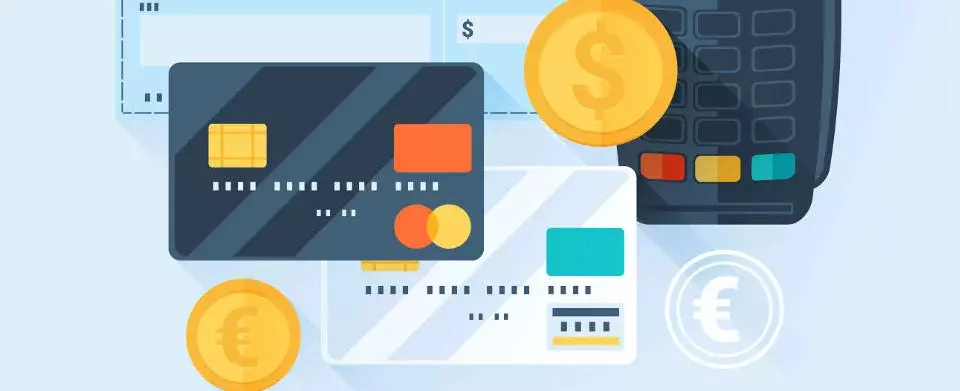Paying online: payment methods in e-commerce
The constant evolution of products, deals, and services available on the internet has resulted in a rapidly increasing range of payment methods. New and more streamlined payment possibilities are constantly appearing on the market. But do these newcomers have what it takes to outdo traditional forms of transaction? What advantages does e-payment offer over credit, debit, or cash payment? And what risks are there when processing transactions through third parties? In order to offer customers the best possible services, storeowners must keep an eye on these trends and provide a selection of secure online payment methods.
- Get started with stunning designs
- Grow with advanced marketing and admin tools
- Sell on social and online marketplaces
Current types of online transactions
Gaining the customers’ trust during online transactions is no easy task. Reports about phishing and theft can often lead to heavy skepticism about online transactions. To convert website visitors into paying customers, online store owners need to accommodate various online payment methods. The truth is, there is no perfect solution for transferring money online; every payment method has its own unique set of advantages and disadvantages. Secure online payment is often a compromise between the buyer and seller’s protection.
Purchasing on account
This form of payment is particularly favoured by international customers, and not without good reason; with this payment method, the risk of the transaction is incurred by the online vendor. It’s the company’s responsibility to send the goods and the invoice together. Only once the customer has the package does the seller receive payment. The money is transferred either by a money transfer form or online banking. This way, sensitive bank details aren’t disclosed on the internet. However, the shop owner then risks covering the costs should the customer fail to make the outstanding payment. Despite this drawback, it’s still recommended that online stores offer this payment method. External payment service providers, such as Klarna, minimise this risk by taking on the distributor’s payment claim when it comes to issues of factoring and processing customers’ payments. Some online stores only offer this form of payment to their regular customers; a move that helps curb the risk of fraud or outstanding payments. There are no transaction costs when purchasing on account.
Prepayment
Advance payment is the exact opposite of purchasing on account. When a customer opts for this form of online transaction, the goods are not dispatched until the company has received payment. This way, the customer bears the risk of the transaction. Should the online store turn out to be unreliable, or even a scam, the goods may not be delivered, even if the customer has already paid for them. This also makes returning faulty or damaged goods much more complicated. To make this payment method more appealing to customers, some online traders offer exclusive online deals. Conventional transfer furthermore ensures that sensitive bank details remain secure, which presents another advantage to the customer. There are also no transaction fees with this payment method. However, customers are advised to only use this method of payment if they trust the vendor, and that’s why it may be wise to offer prepayment as part of your range of online payment methods.
Direct debit
Direct debit is another popular and well-established payment method. Due to its relatively low transaction fees and planning security, this has proven to be a particularly attractive option for online trading. Direct debit to an online shop is a convenient option for buyers; the direct debit authority withdraws funds directly from the customer’s bank account, usually as soon as the goods have been sent off. Customers can also report any unauthorised transactions to their bank and receive a refund. This offers solid protection against dubious companies and fraudsters. However, this payment form can prove risky. When paying by direct debit, users have to disclose their account number and sort code as well as the name of their bank, making themselves vulnerable to data theft and phishing.
This is why online store owners should ensure that private customers are only required to transfer their data over a secure site. The security protocol, ‘secure socket layer’ (SSL) offers reliable protection. In order to prevent credit losses through unsecured bank accounts, external services, such as Klarna, can offer a credit rating; keep in mind, though, that using this service will result in additional transaction fees.
Cash on delivery
Payment by cash on delivery is a practical compromise in favour of both the buyer and retailer’s security, which explains this payment method’s lasting popularity. The customer pays the courier in cash directly on delivery, which bypasses the risk of sharing personal information online. This makes it one of the safest methods of payment for online transactions. Although this isn’t the most common method of payment, many major retailers and courier services still offer this service, including UPS and FedEx. With this form of payment, there is an additional delivery fee, which the customer usually pays. One of the biggest risks this payment method poses occurs if the customer doesn’t receive the goods, as the seller is then left to cover the expenses. Another downside is that the customer has little or no chance upon delivery to check that the goods are in working order, making the return of damaged or unsatisfactory goods more difficult than with direct debit.
Credit card
Paying by credit card is undisputedly the most convenient online payment method for both parties. Generally, customers only have to give the name of the credit card company, personal card number, and security number in the stores’ autocompleted order form during the payment process. The retailer then receives payment from the corresponding credit institute and sends the goods. Should these goods fail to arrive, or be in any way damaged or incomplete, the customer can easily obtain a refund from the credit card provider.
This payment method is available in practically every online store thanks to its uncomplicated procedure. However, since this type of online transaction also requires the customer to disclose personal bank details, the same risks are present as with payment by direct debit. This means that the same precautions also apply: card details should only be given through a secure platform. Credit card customers are constantly being made aware of the dangers of internet scammers on the hunt for sensitive data through phishing scams. This is why online store owners have to overcome the additional challenge of ensuring that customers’ data stays secure. There have been several cases in the past of hackers successfully managing to access the big retailers’ databases, and other instances of employees forwarding personal information to third parties.
Payment service providers
More and more customers trust online stores that offer online transactions via external payment service providers. Online store operators profit from outsourcing the transaction process because the payment service providers must also then assume responsibility for managing claims and refunds. Additionally, today’s technology allows for a faster transaction between the customer and retailer, meaning that orders can be processed more efficiently and customers receive their purchases sooner. This increased speed is particularly noticeable when purchasing digital downloads such as mp3 files or online magazines (often reaching the customer within seconds). This is why payment service providers are particularly popular for micropayments. Some providers such as PayPal and Moneybrookers require the customer to sign into a separate customer account, whereas others allow a direct transfer from the user’s account. The advantages and disadvantages are as follows:
- Payment providers with user accounts: with this payment method, the customer’s personal information isn’t shared with the retailer; rather, it remains with the service provider. This substantially reduces the risk of customers falling victim to online fraudsters. The market leader, PayPal, offers its users a buyer protection policy that allows refunds of faulty, damaged, or missing goods. But even though user accounts are password-protected, they are still increasingly targeted by hackers and fraudsters.
- Direct transfer via a third party: Largely favoured abroad, payment service providers that do not require users to login to separate accounts instead direct customers to enter their bank routing number into the retailer’s order form. This then leads to their online banking current account. From there, the sum is paid to the retailer as normal. A transaction authentication number (TAN) must then be used in order to make the payment secure.




